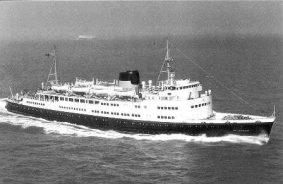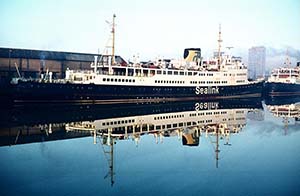Eerder met het oog op de komende wereldtentoonstelling van 1958 besloot het Zeewezen om een reeks van drie schepen bij Cockerill te bestellen van hetzelfde type als de voorgaande Koning Albert en Prince Philippe. Op woensdag 9 november 1955 werd de eerste van die reeks de Roi Leopold II als bouwnummer 777 te water gelaten. Technisch was er met de voorgaande niet zoveel veranderd behalve er een sprinkler systeem werd geplaatst. Anderzijds werd aan het silhouet veranderd door de vorm van de brug en schouw te wijzigen. Een streling voor het oog.
Het was ook het laatste schip dat met houten dekken werd voorzien omwille van het gewicht.
Met een capaciteit van 1700 reizigers en vijf dekken werd de Roi Leopold III op 22 juni 1956 afgeleverd en kwam in juli 1956 in de vaart. Het schip had twee restaurants, een eetsalon en vier andere salons.
Er waren tevens 18 cabines en 104 slaapplaatsen. Op het achterdek konden er 30 wagens worden geplaatst.
Met een snelheid van 23.5 knopen werd dit schip samen met de opvolgers de parels in het vervoer van passagiers.
In 1975 werd de Roi Leopold III uit de regelmatige dienst gehaald en nog enkel ingezet voor speciale reizen. Iin 1976 als reserveschip stand-by geplaatst.
Op 2 maart 1978 werd het schip aan de Taif Compania Naviera Panama verkocht en verliet op 10 maart Oostende richting Piraeus Griekenland om tot car-ferry te worden omgebouwd. Het kreeg de nieuwe naam “Najd”. Het kwam in dienst op de lijn Jeddah-Aquaba-Port Suez.
In 1986 werd het schip herdoopt tot Najd I maar het volgende jaar vanaf 15 maart 1987 bij de Gadani Beach by World Marine Shipping & Trading C° Pakistan afgebroken.


